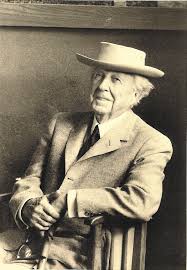Towards the end of the nineteenth century many outspoken and influential writers, artists, and reformists began to rebel against the overly ornate, machine-made, Victorian style and strive for more simplistic, man-made pieces. This brought about the Arts and Crafts movement.
One of the pioneers of the Arts and Crafts movements was John Ruskin, an art critic, writer, and social reformer who believed that the beauty of an objects was found in its construction. The method, the materials, and the struggle of the artist were to him just as important as the finished object. He disliked the “perfection” of the objects made by machines because he thought that it was not personal and the workers creating them lacked joy and pride in their work (Raizman 107). Ruskin concentrated more on the spiritual benefits of design than the technology, production, or beauty of the products.
A contemporary of Ruskin’s, William Morris, was also a big contributer to the Arts and Crafts movement. Morris was not only a designer, artist, and craftsman: he was also a poet, novelist, publisher, socialist, translator, and public speaker. He too disapproved of the emphasis placed on money, material goods and the over- indulgence of the Victorian Era. He began his interest with design through the interiors of his own house (Red House, designed by Philip Webb). Rather than buying the furniture for his house in shops, William Morris and his friends decided to create the pieces for his home which later lead to the firm Morris, Marshall, and Faulkner (109). The firm moved away from the creation of furniture and toward the design of patterns for ceramic tile, embroidery, wallpaper, carpets, and printed fabrics (111). He refused to use machines to creates his patterns which were focused on nature and were two-dimensional. Despite his best efforts to “overthrow” the use of the machine, his hand-made design were more expensive and took more time to create. He realized that man would have to learn to work along with the machine to be successful.
Do you think that even because they realized that they could not completely do without the machine, the Arts and Crafts Movement was still successful?
Do you believe that as a society we have once again turned our backs on hand-made goods and opted for more cheaply made machine products? (EX: buying products from IKEA instead of from local craftsman)


